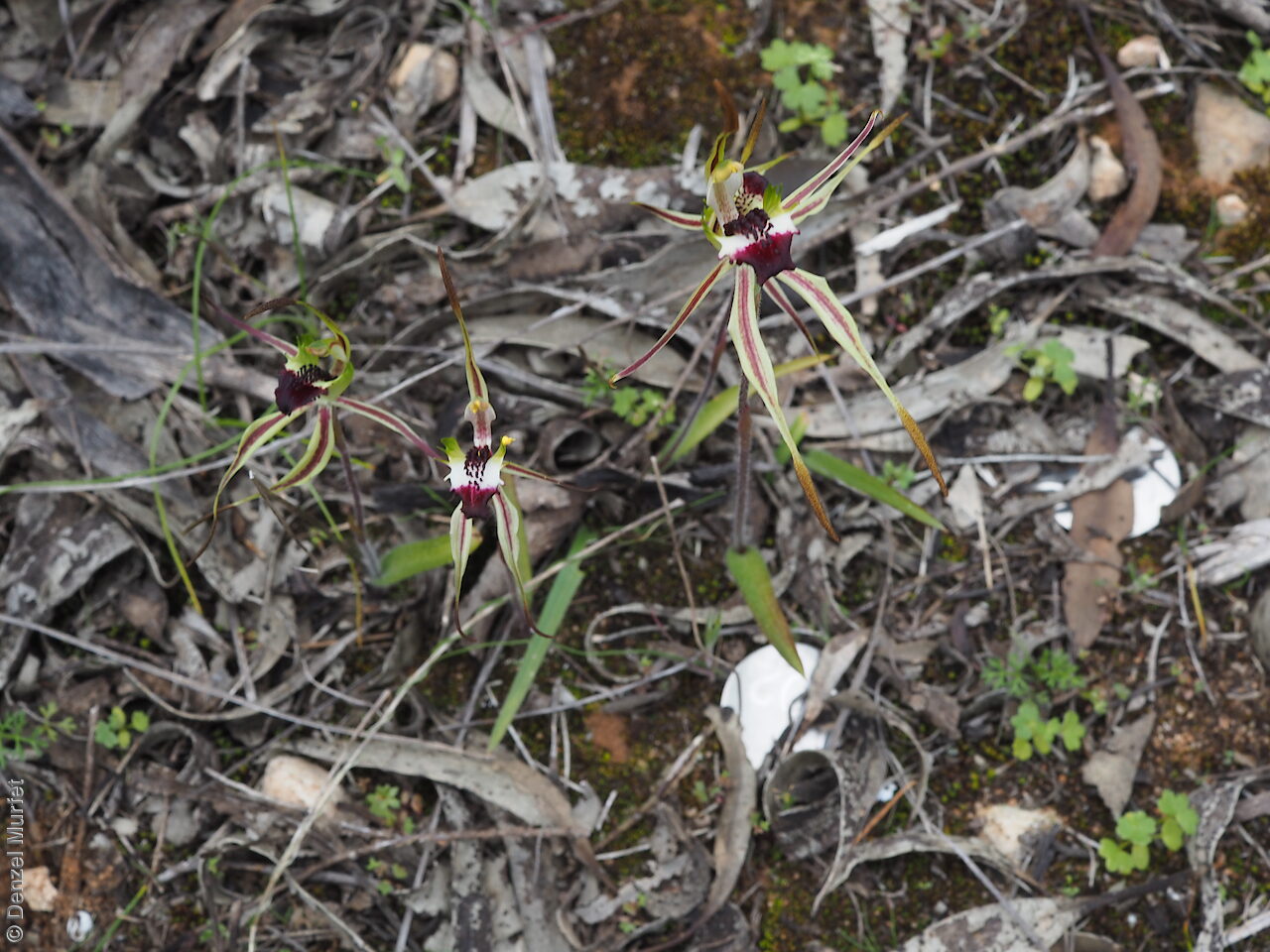
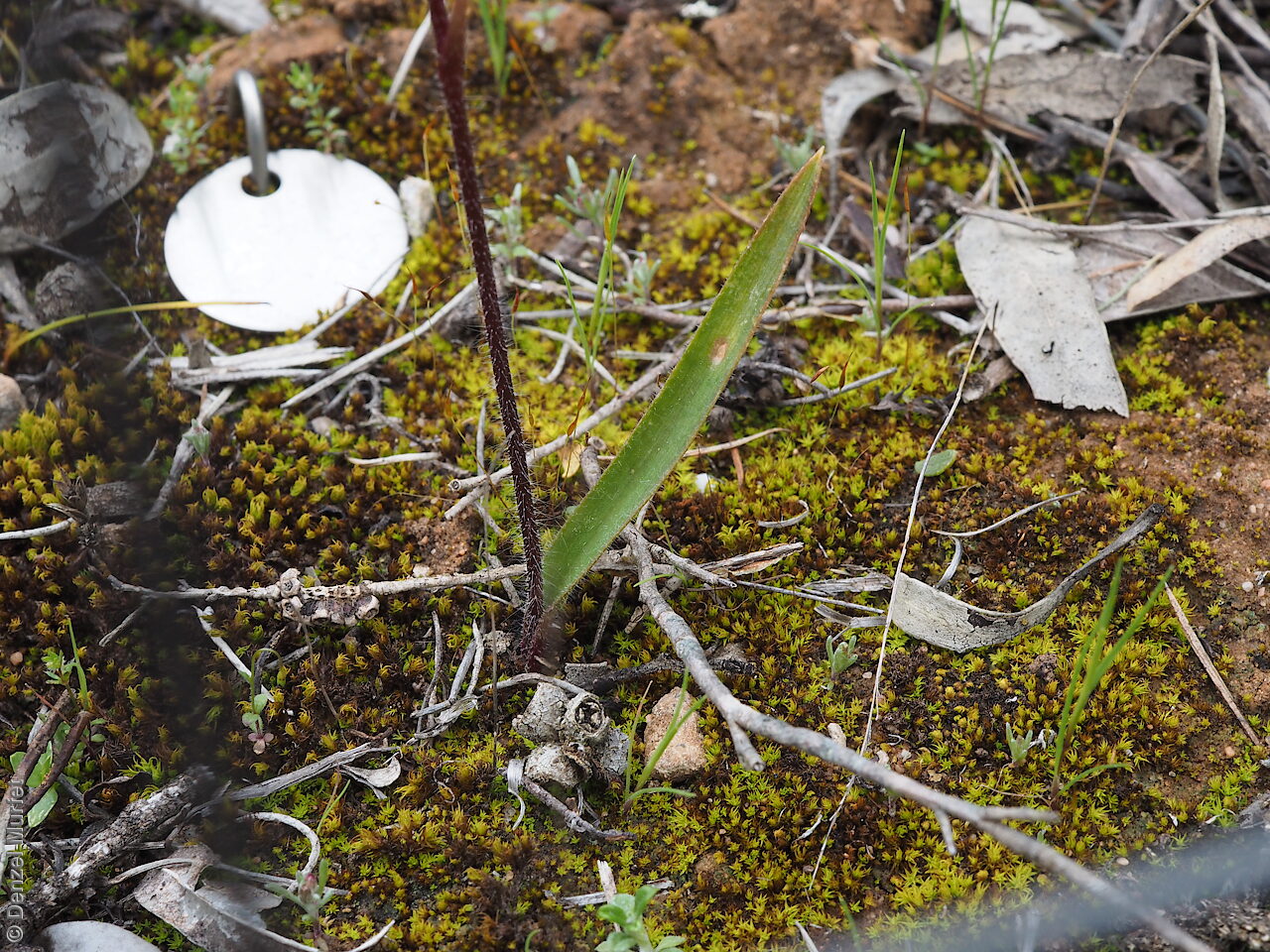
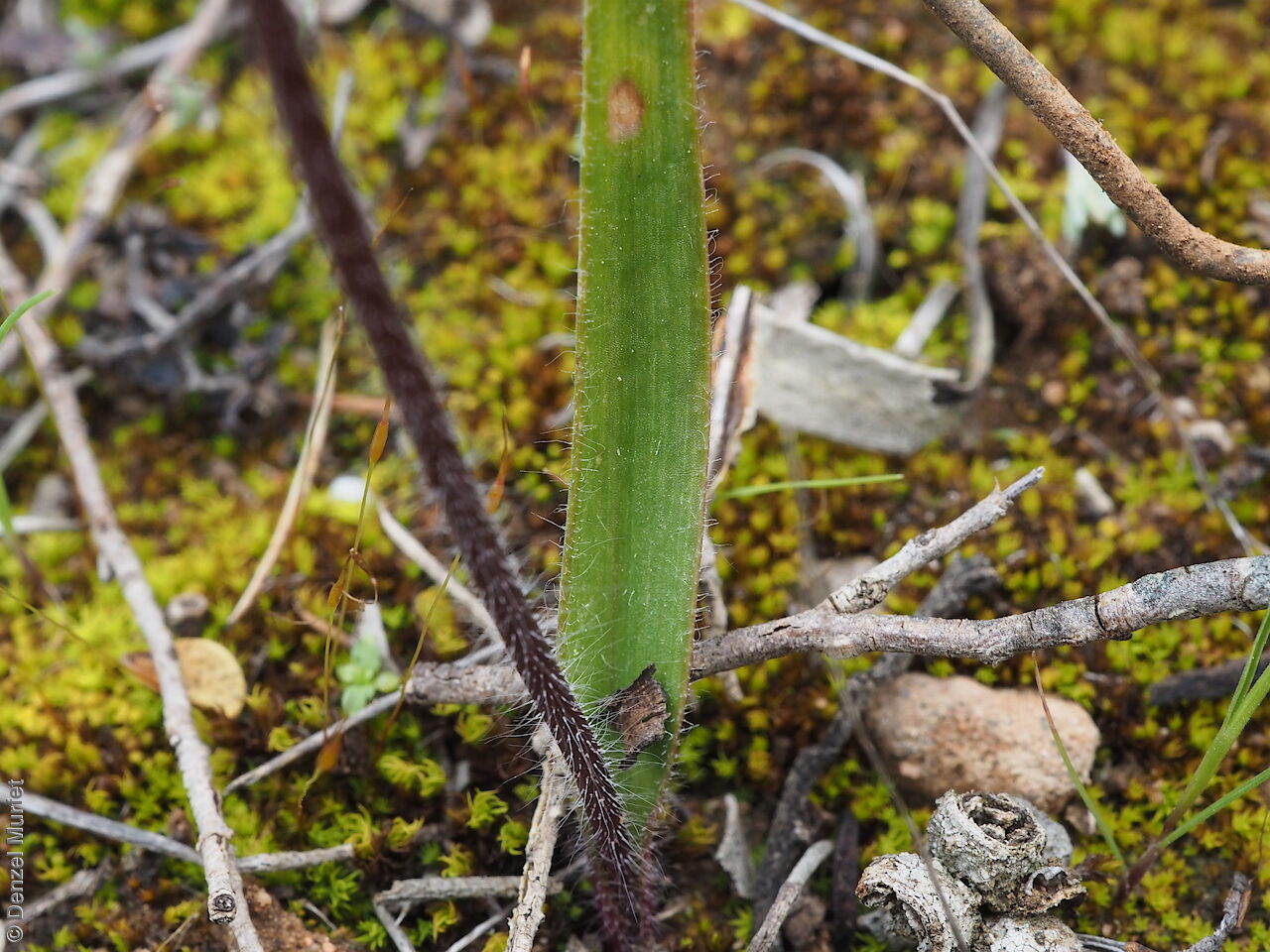
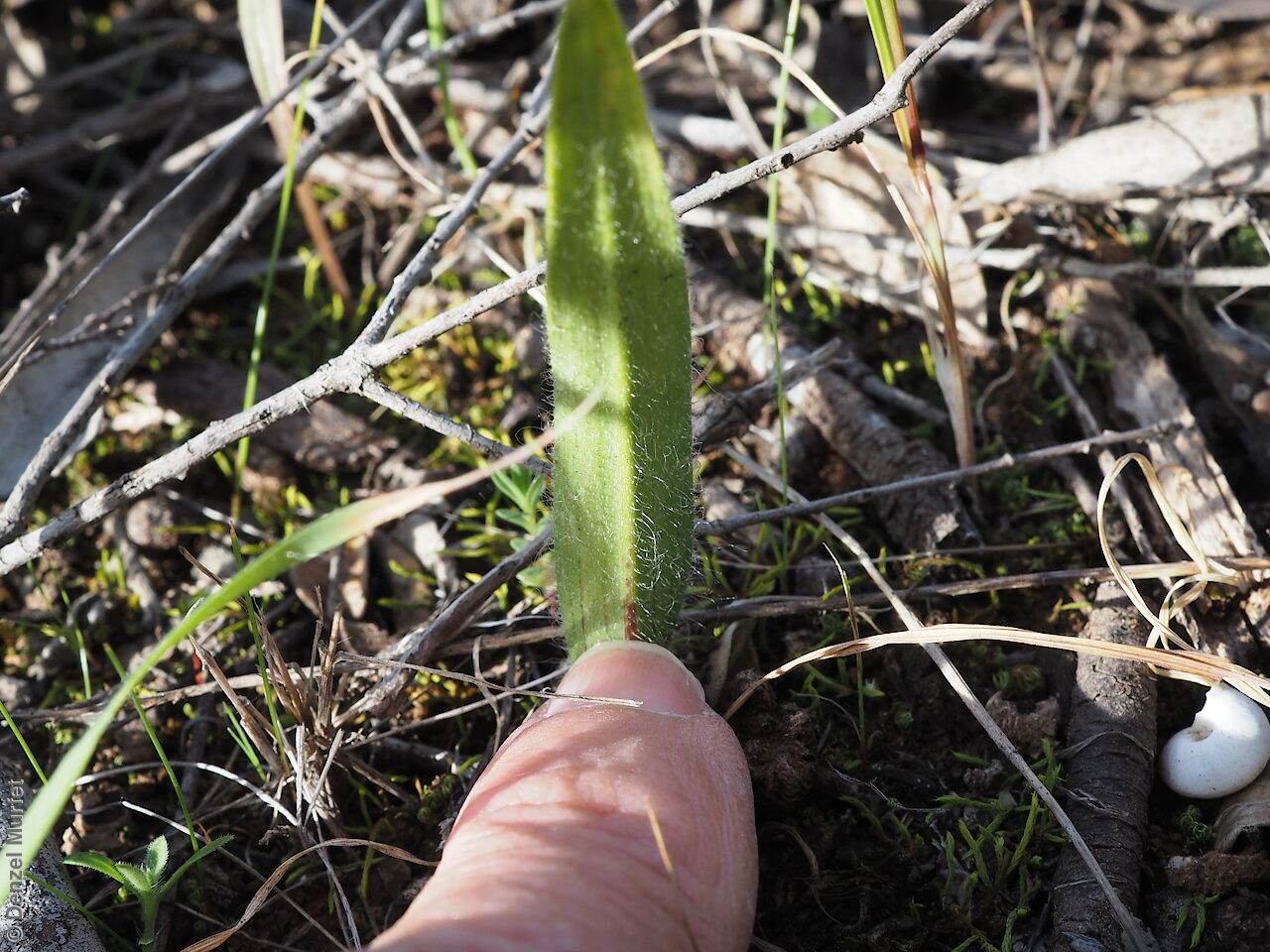
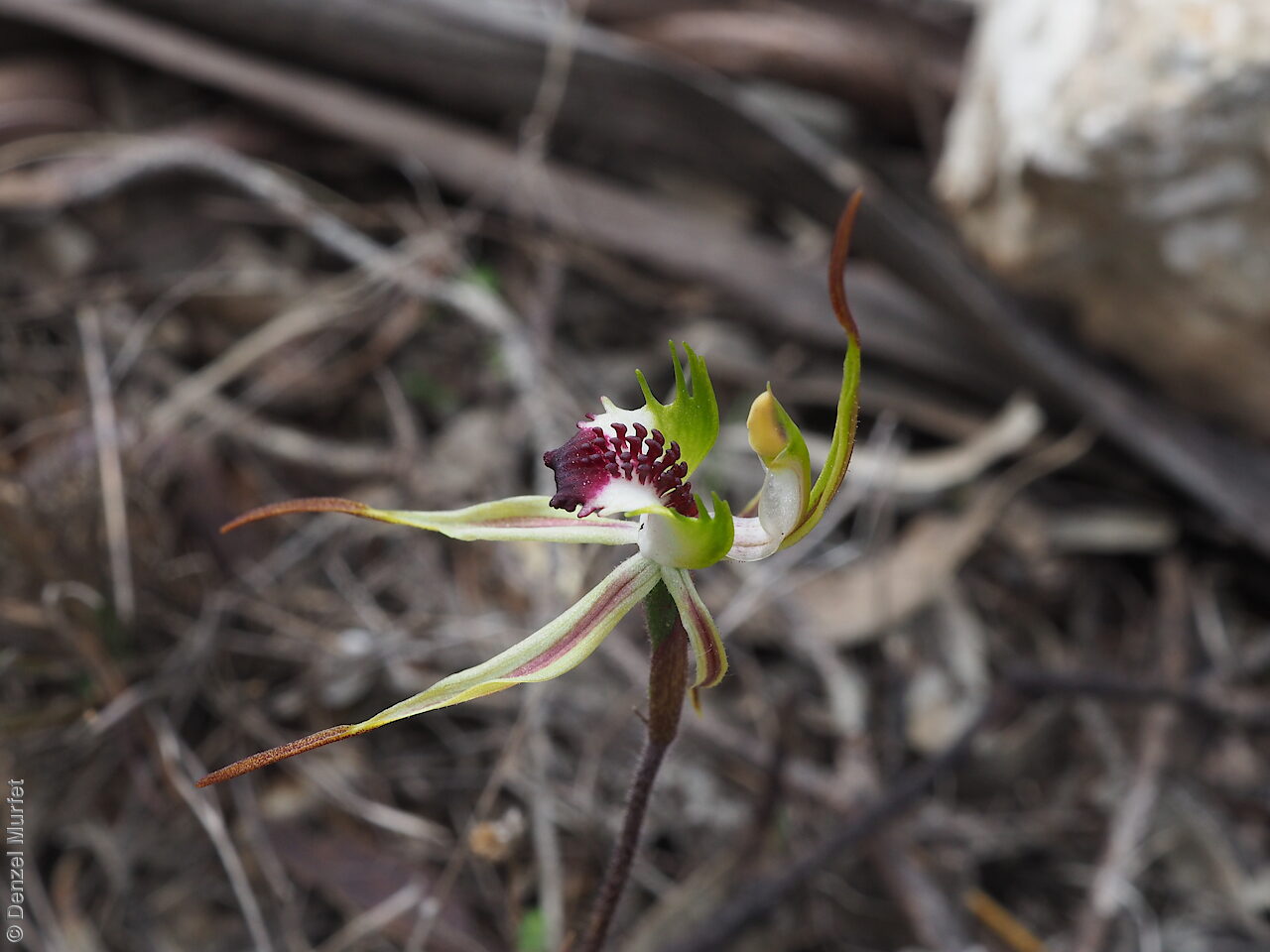
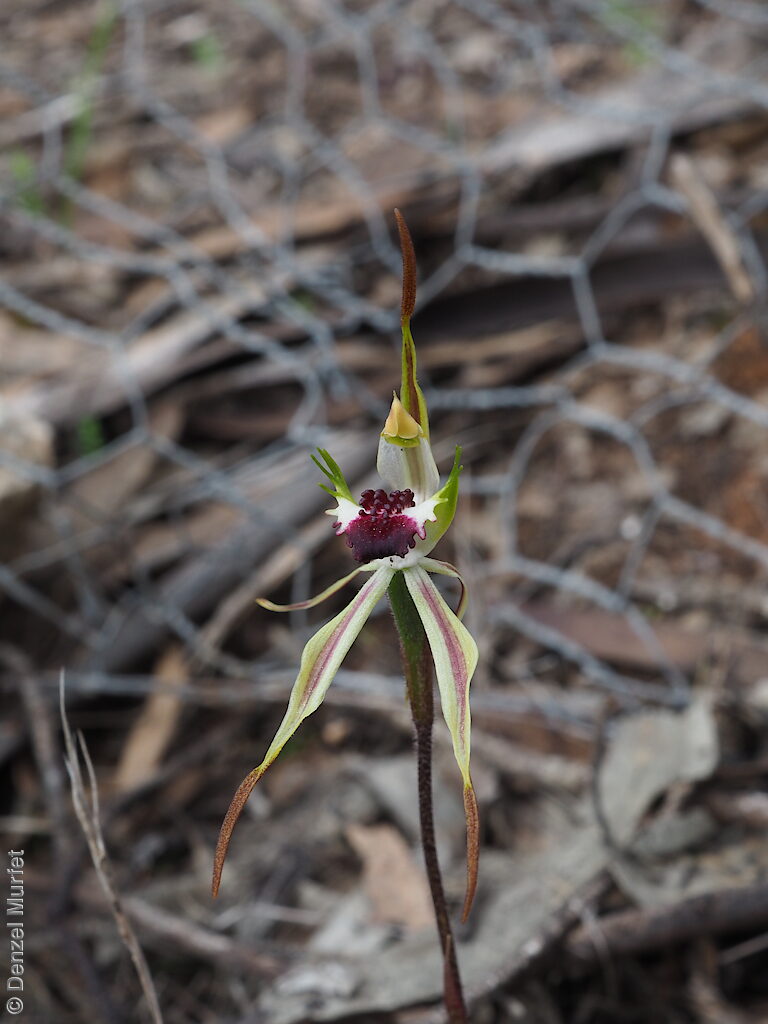
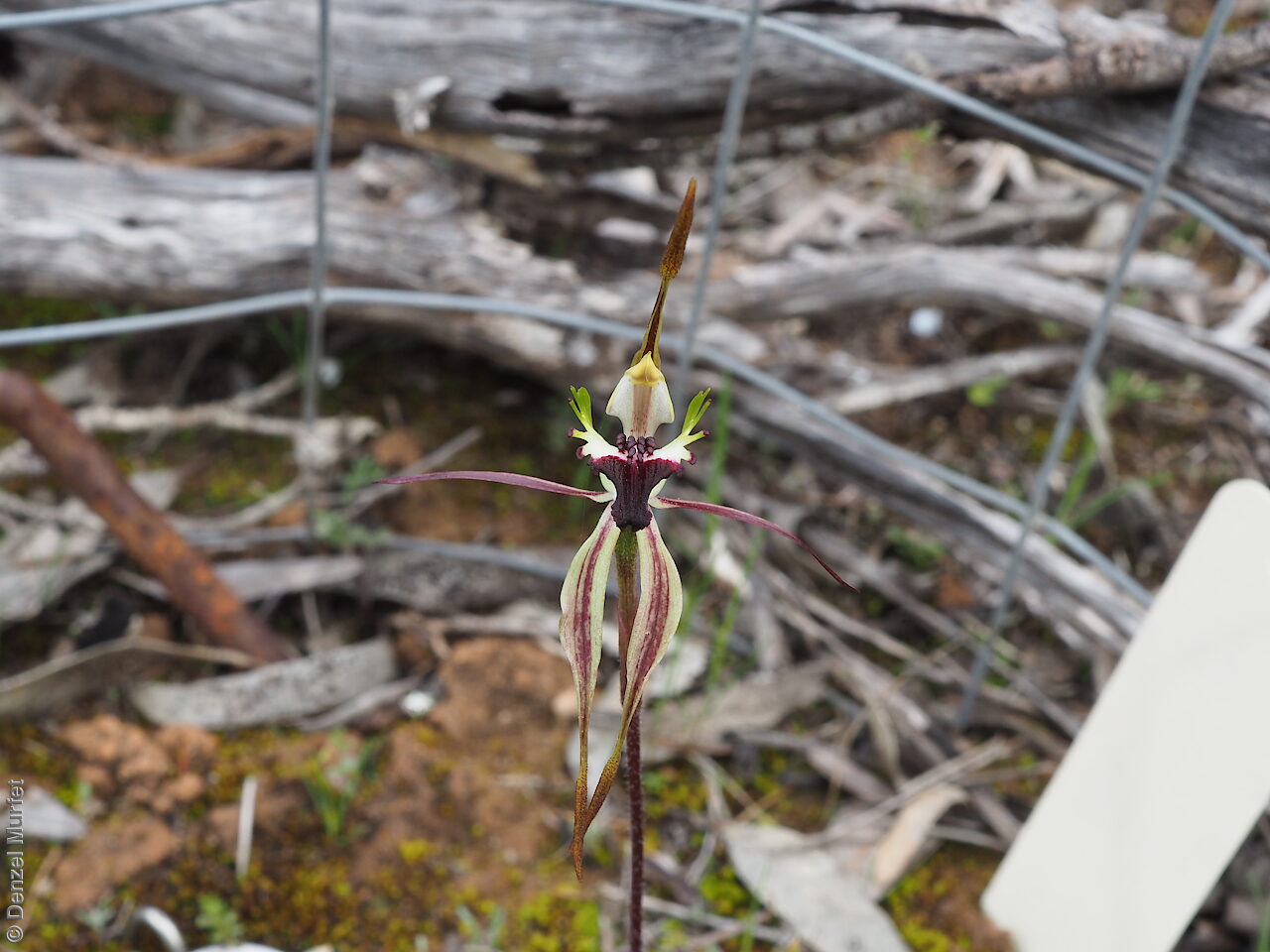
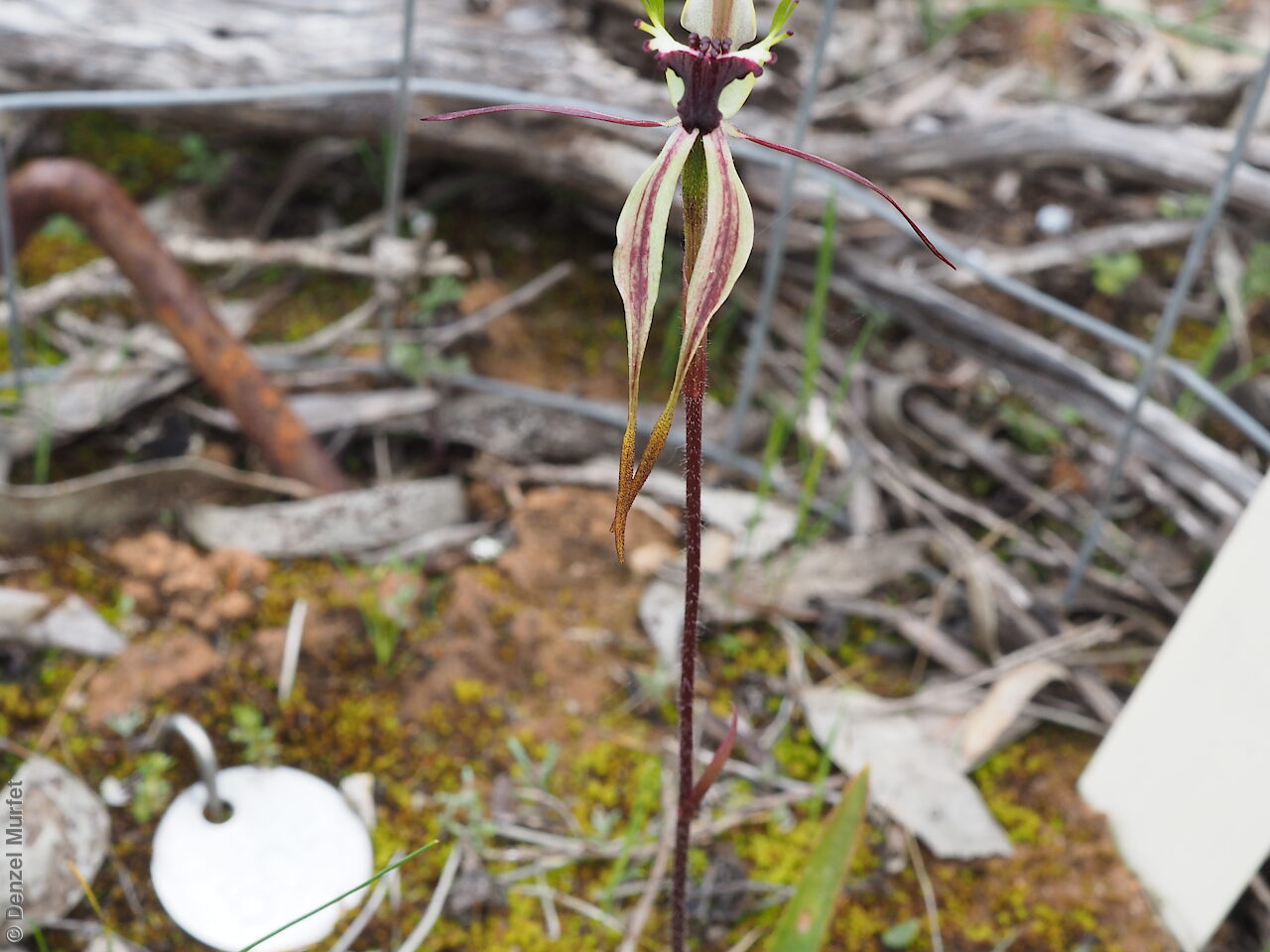
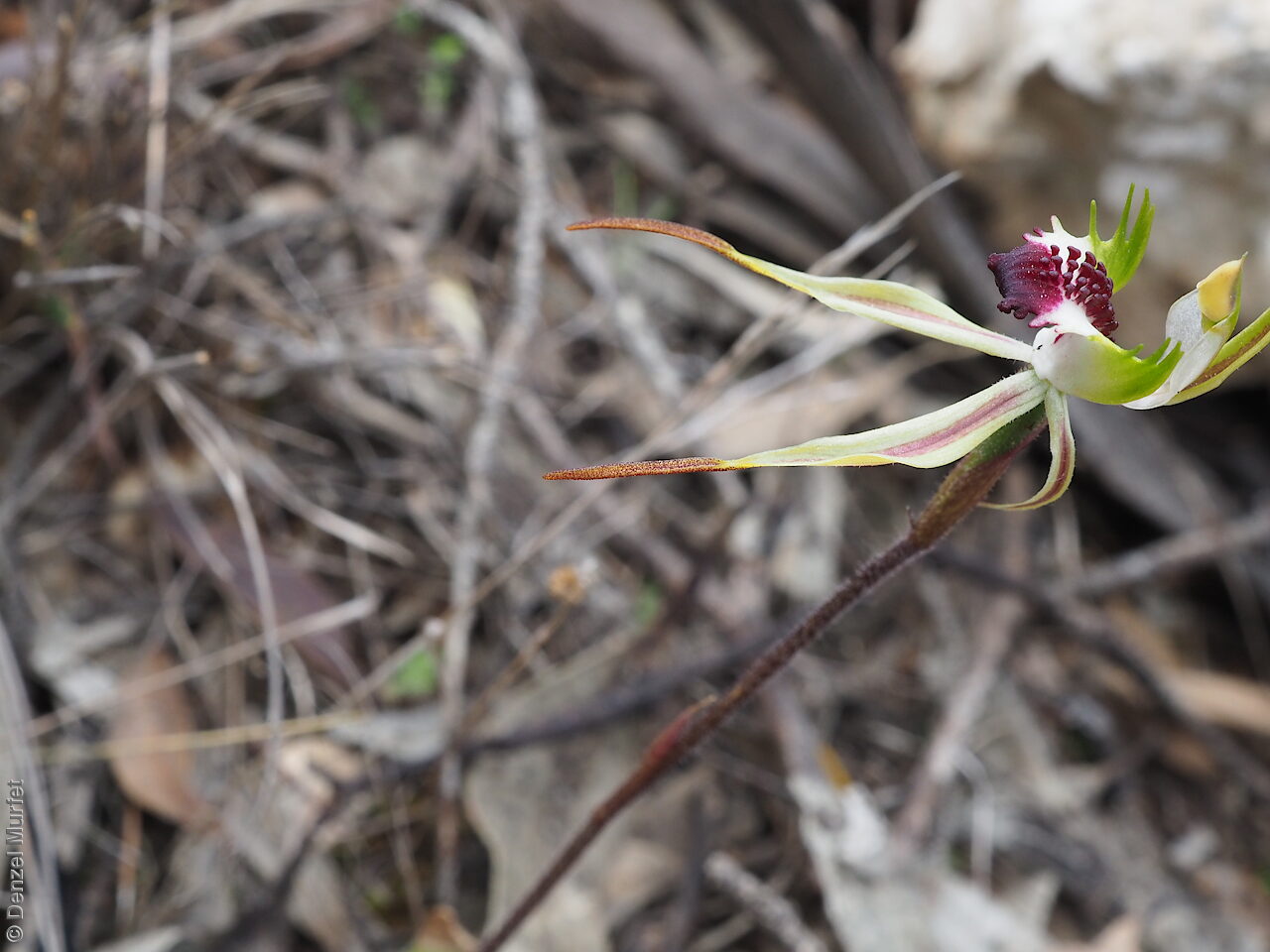
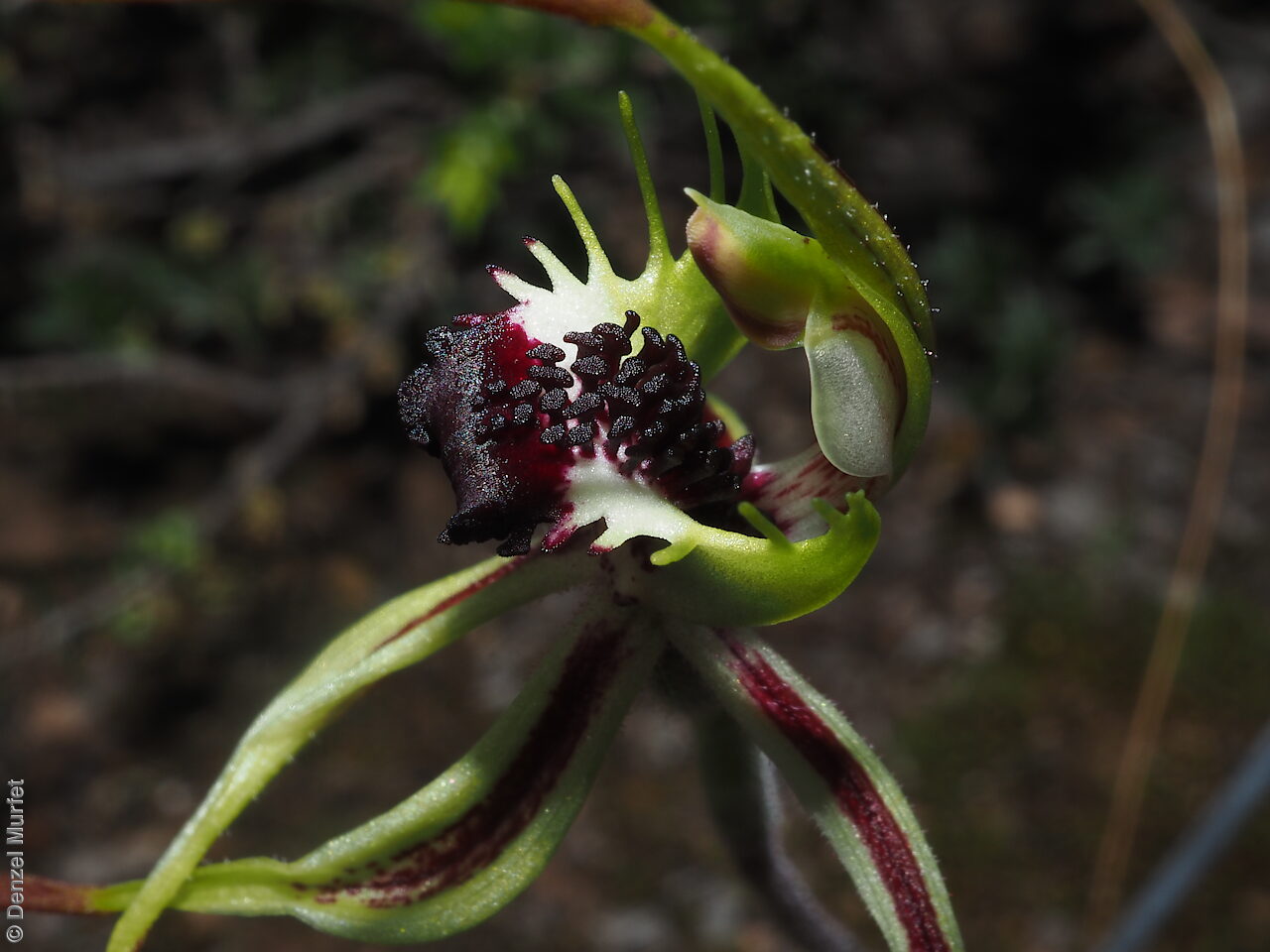
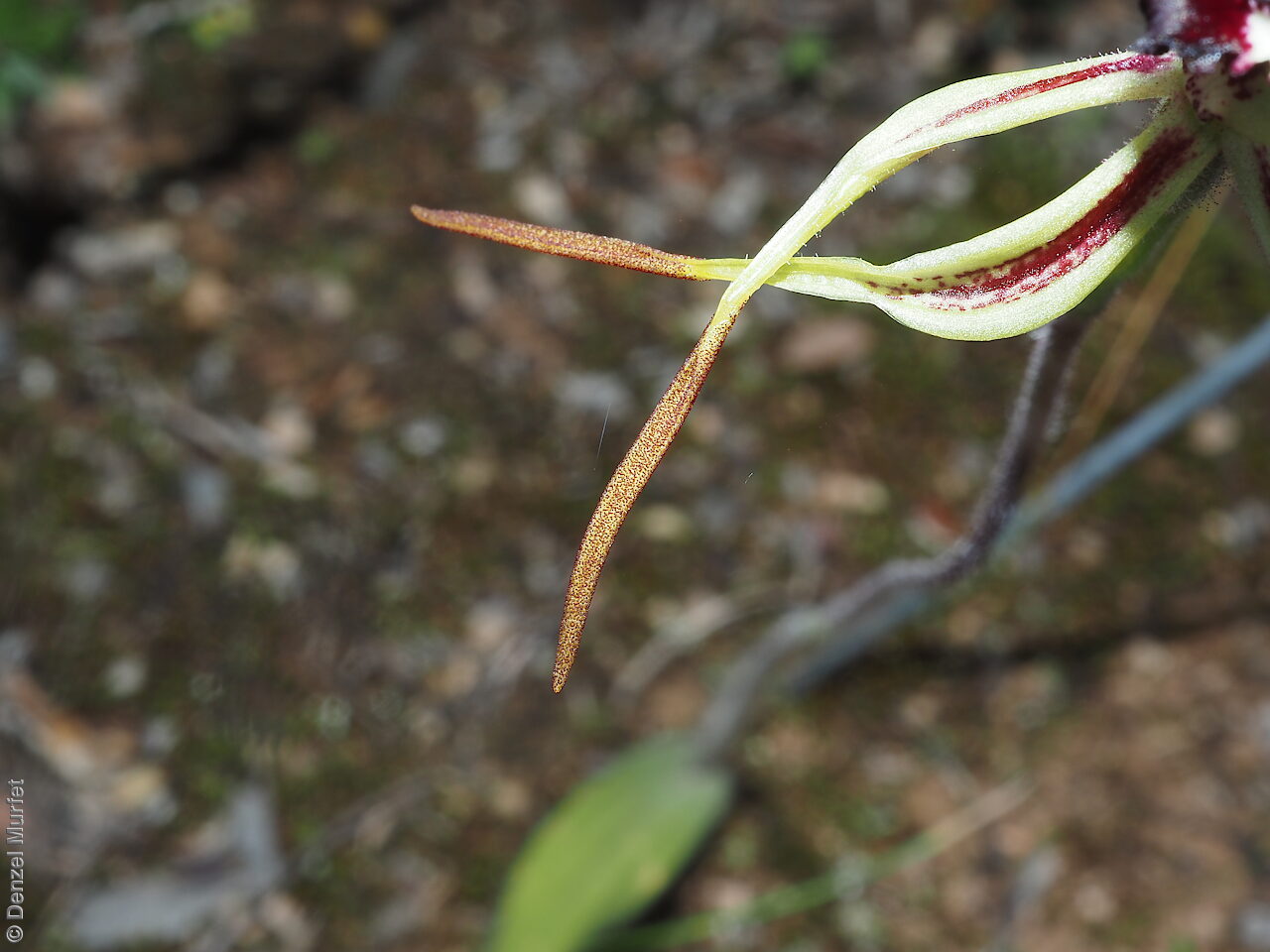
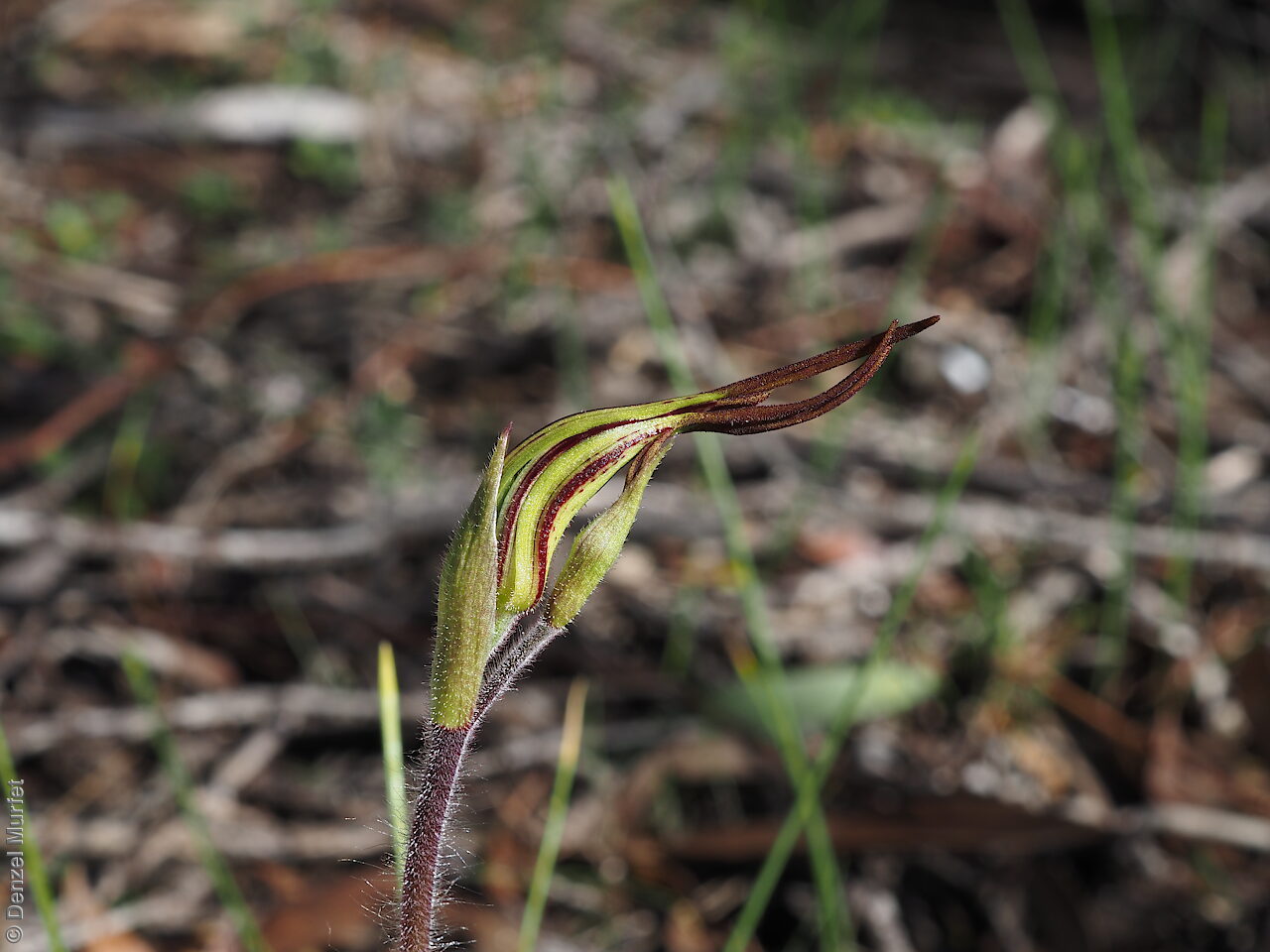
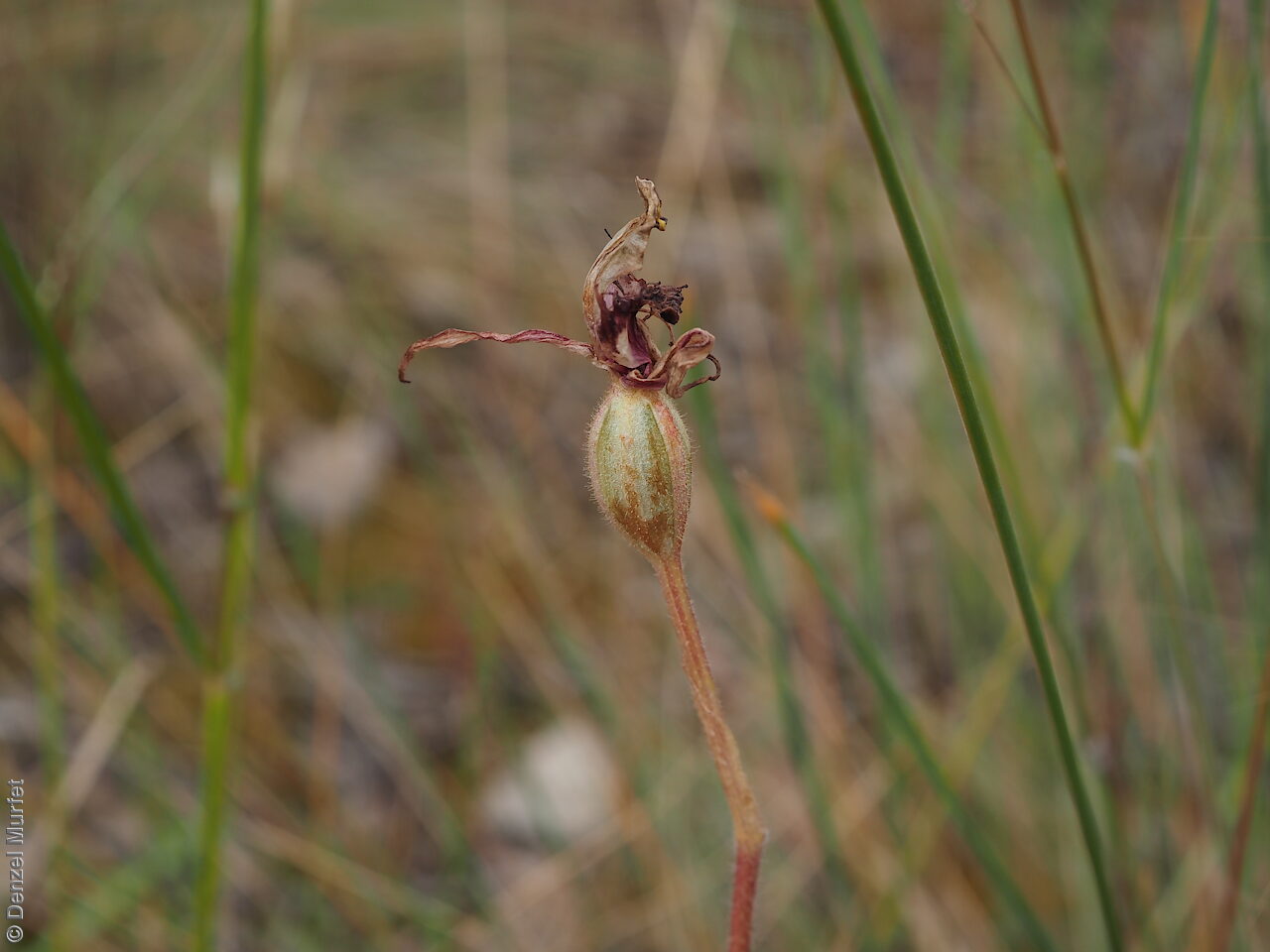
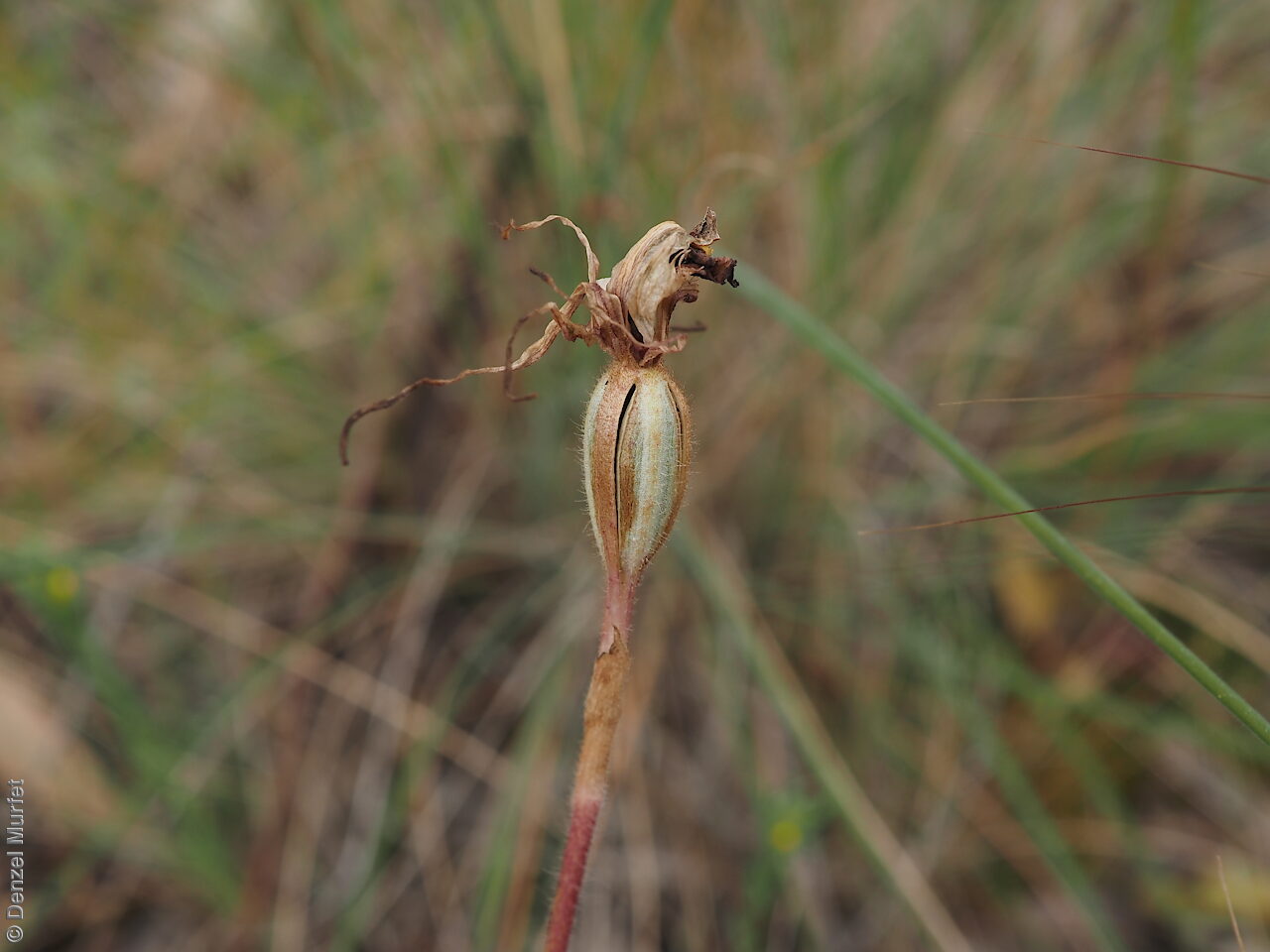
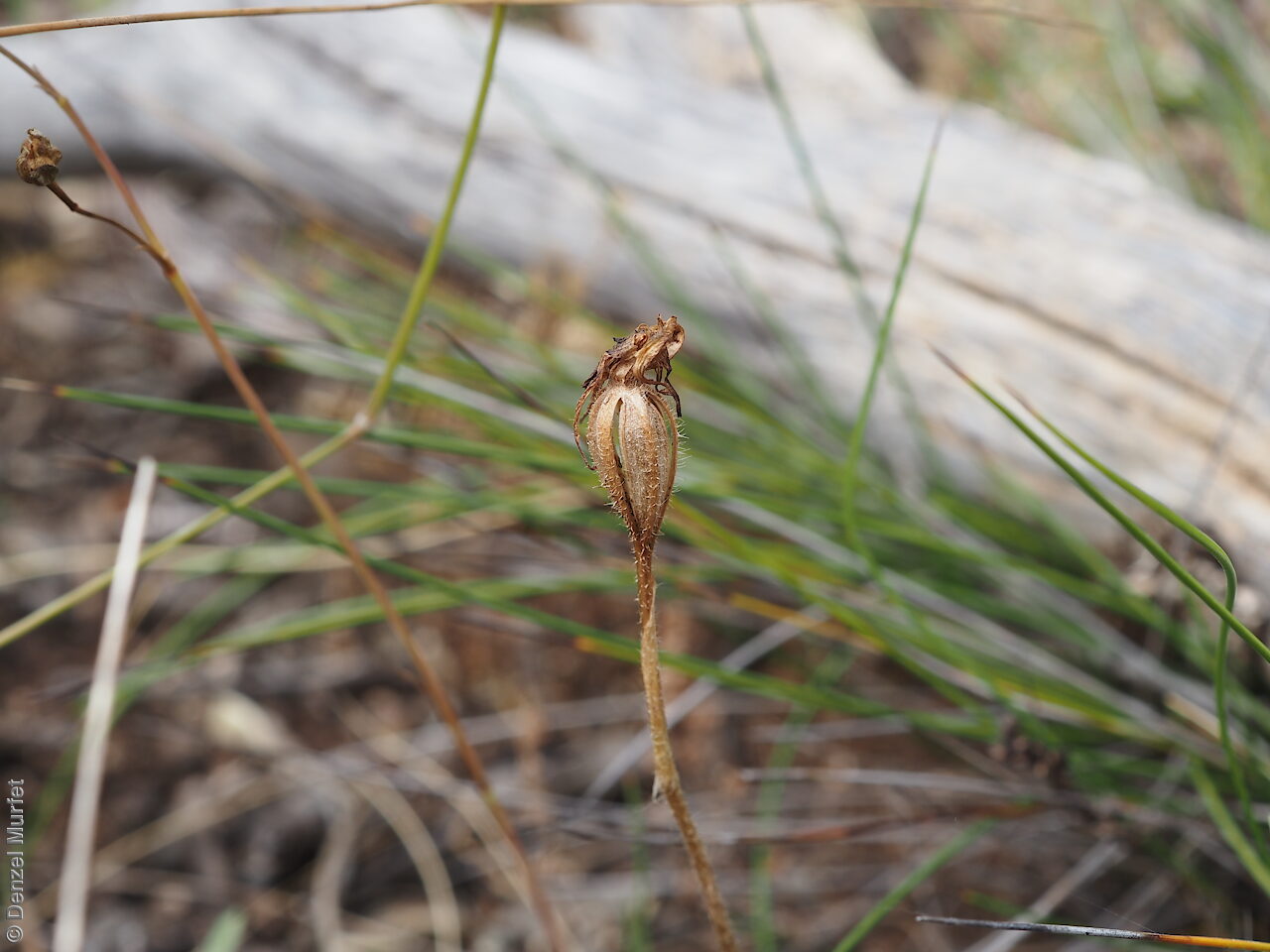


Prior names
Calonemorchis macroclavia
Arachnorchis macroclavia
Calonema macroclavium
Common names
Large-club Spider-orchid
Etymology
Caladenia from the Greek 'kallos' meaning beauty and 'aden' meaning a gland, referring to the colourful labellum and the glistening glands at the base of the column that are present in many of the species. Macroclavia from the Greek 'macros' meaning large and 'clava' meaning club, referring to the large clubs on the sepals.
Distribution and status
Endemic to South Australia and restricted to the Yorke Peninsula, growing in fertile loamy soils in mallee and broombush. Native. Very rare in South Australia. Endangered under the EPBC Act.
Herbarium region: Northern Lofty
AVH map: SA distribution map (external link)
Plant description
Annual herb growing from an underground tuber, with a single oblong-lanceolate leaf covered in short hairs. Inflorescence on a long slender reddish stalk with one yellowish-green flower. Petals and sepals are broad at the base then tapering with central red strip with dark brown or golden tips. Dorsal sepal erect to incurved, lateral sepals thrust forward. The labellum recurved, green, white and crimson with margin fringed with long linear green teeth and 4 rows of large crimson club-shaped calli. Flowering between August and October. Fruits are pale-brown hairy, papery ellipsoid capsule containing numerous tiny seeds.
Seed collection and propagation
Collect seeds between October and November. Collect fat capsules as they start to dry and turn brown. Pods will split and release the seeds quickly and will require monitoring. To increase the chances of collecting mature pods, it is recommended that a small breathable bag (ie. Organza bags) be used to enclose the developing capsules. Place the capsules in a container that will hold fine seeds and leave to dry for a few weeks or until the capsule split. Then carefully hold the capsule and tap it gently to release the seeds. Store the seeds with a desiccant such as dried silica beads or dry rice, in an air tight container in a cool and dry place, refrigerator or in liquid nitrogen.
| Location | No. of seeds (weight grams) | Number of plants | Date collected | Collection number Collection location | Date stored | % Viability | Storage temperature |
|---|---|---|---|---|---|---|---|
| 20-Oct-2005 | J. Quarmby Yorke Peninsula | 1-Nov-2016 | N/C | -80°C | |||
| 20-Oct-2005 | J. Quarmby Yorke Peninsula | 1-Nov-2016 | N/C | -80°C | |||
| 20-Oct-2005 | J. Quarmby Yorke Peninsula | 1-Nov-2016 | N/C | -80°C | |||
| 16-Oct-2005 | J. Quarmby Yorke Peninsula | 1-Nov-2016 | N/C | -80°C | |||
| 20-Oct-2005 | J. Quarmby Yorke Peninsula | 1-Nov-2016 | N/C | -80°C | |||
| 20-Oct-2005 | J. Quarmby Yorke Peninsula | 1-Nov-2016 | N/C | -80°C | |||
| 1 pod | 1-Sep-2007 | D. Ways Yorke Peninsula | 1-Nov-2016 | N/C | -80°C | ||
| 20-Oct-2005 | J. Quarmby Yorke Peninsula | 1-Nov-2016 | N/C | -80°C | |||
| 16-Oct-2005 | J. Quarmby Yorke Peninsula | 1-Nov-2016 | N/C | -80°C | |||
| 16-Oct-2005 | J. Quarmby Yorke Peninsula | 1-Nov-2016 | N/C | -80°C | |||
| BGA | 2,800 (0.001 g) | 1 | 24-Oct-2018 | Muloowurtie CR Yorke Peninsula | 24-Apr-2019 | N/C | -18°C |
| BGA | 6,100 (0.002 g) | 2 | 16-Oct-2020 | Wauraltee Beach Area Yorke Peninsula | 28-Jun-2021 | N/C | -18°C |
| BGA | 90,200 (0.032 g) | 4 | 16-Oct-2020 | Muloowurtie CR Yorke Peninsula | 28-Jun-2021 | N/C | -18°C |
| BGA | 778,900 (0.278 g) | 4-Oct-2021 | DJD4045 Yorke Peninsula | 10-Aug-2022 | N/C | -18°C, -80°C | |
| BGA | 455,300 (0.163 g) | 41 | 2-Nov-2022 | Wuraltee Yorke Peninsula | 21-Jun-2023 | N/C | -18°C, -80°C |
Number of plants: This is the number of plants from which the seeds were collected.
Collection location: The Herbarium of South Australia's region name.
% Viability: Percentage of filled healthy seeds determined by a cut test or x-ray.